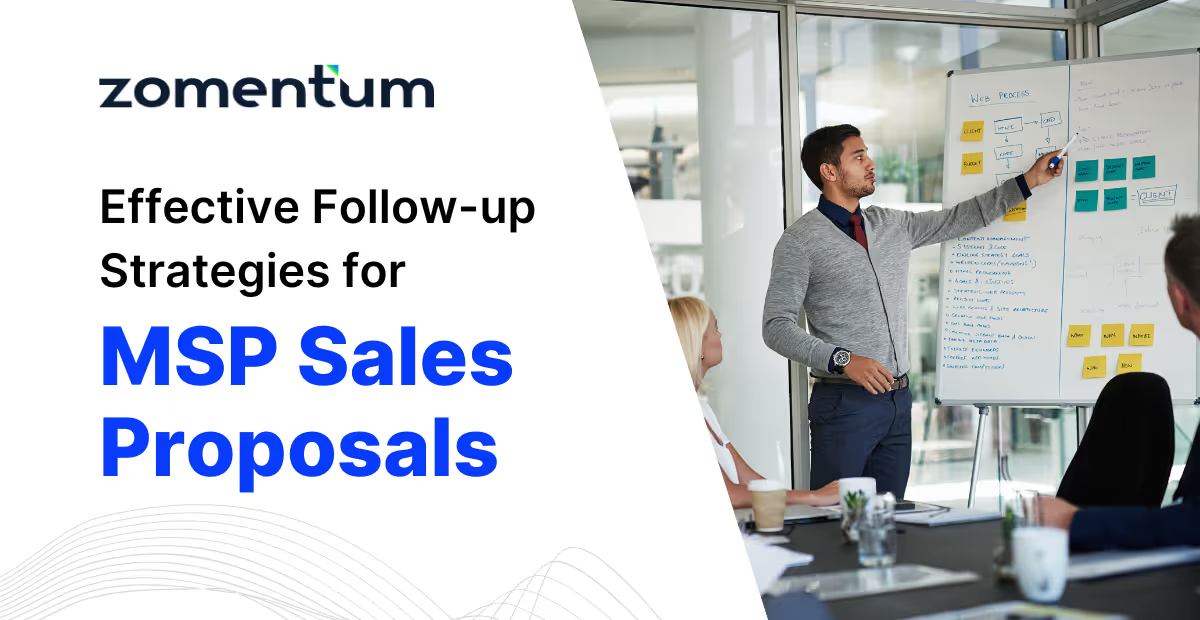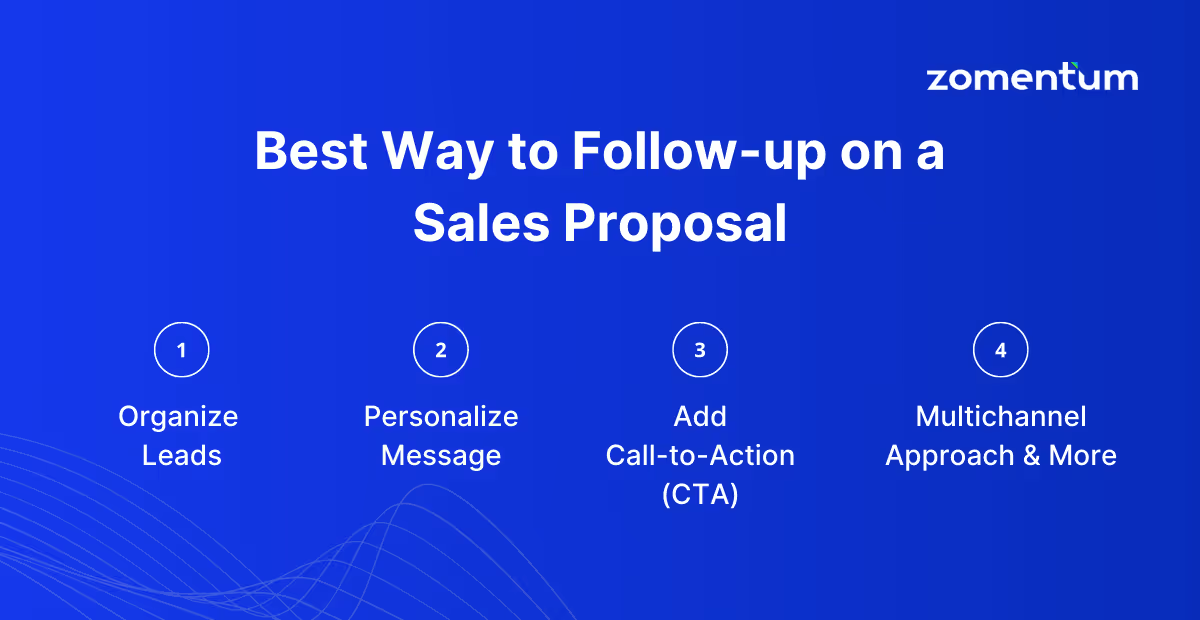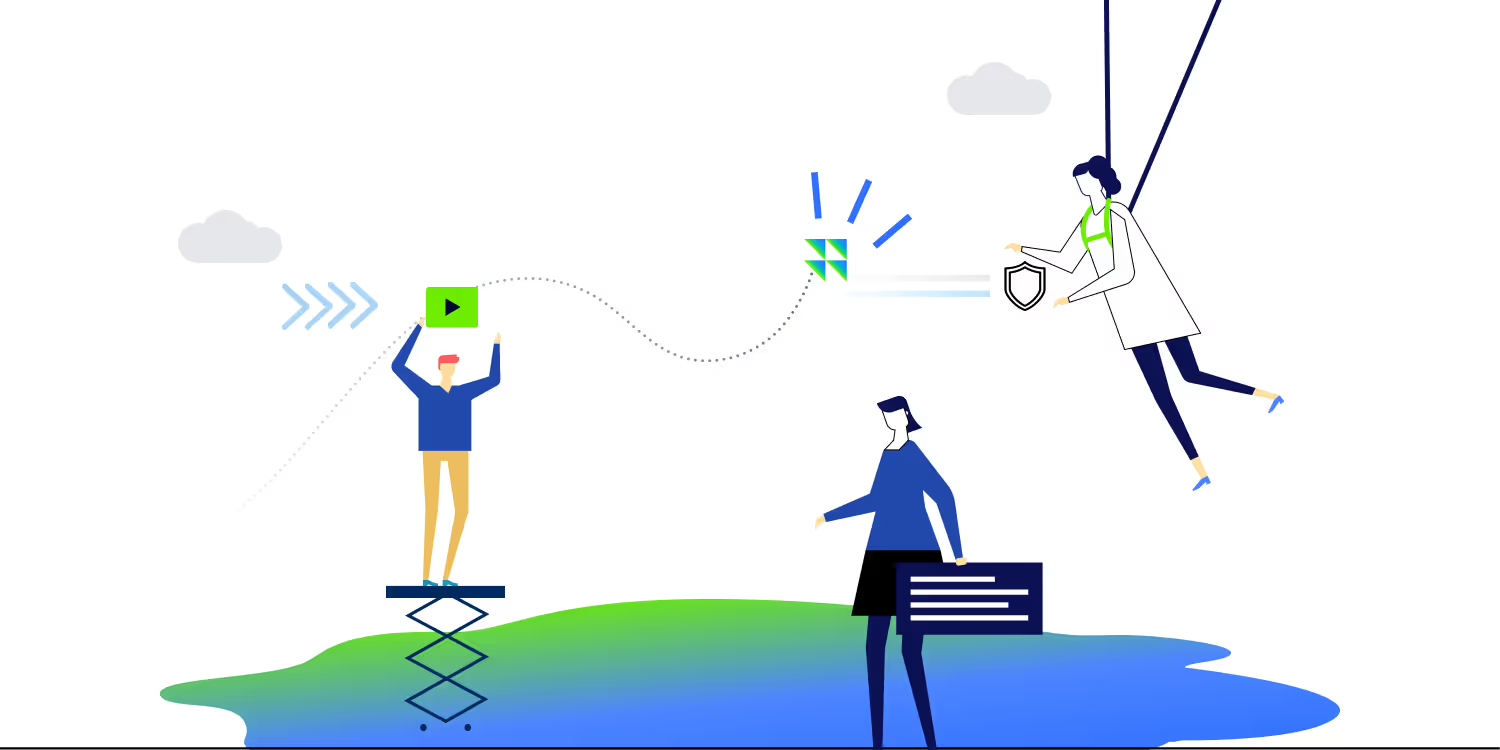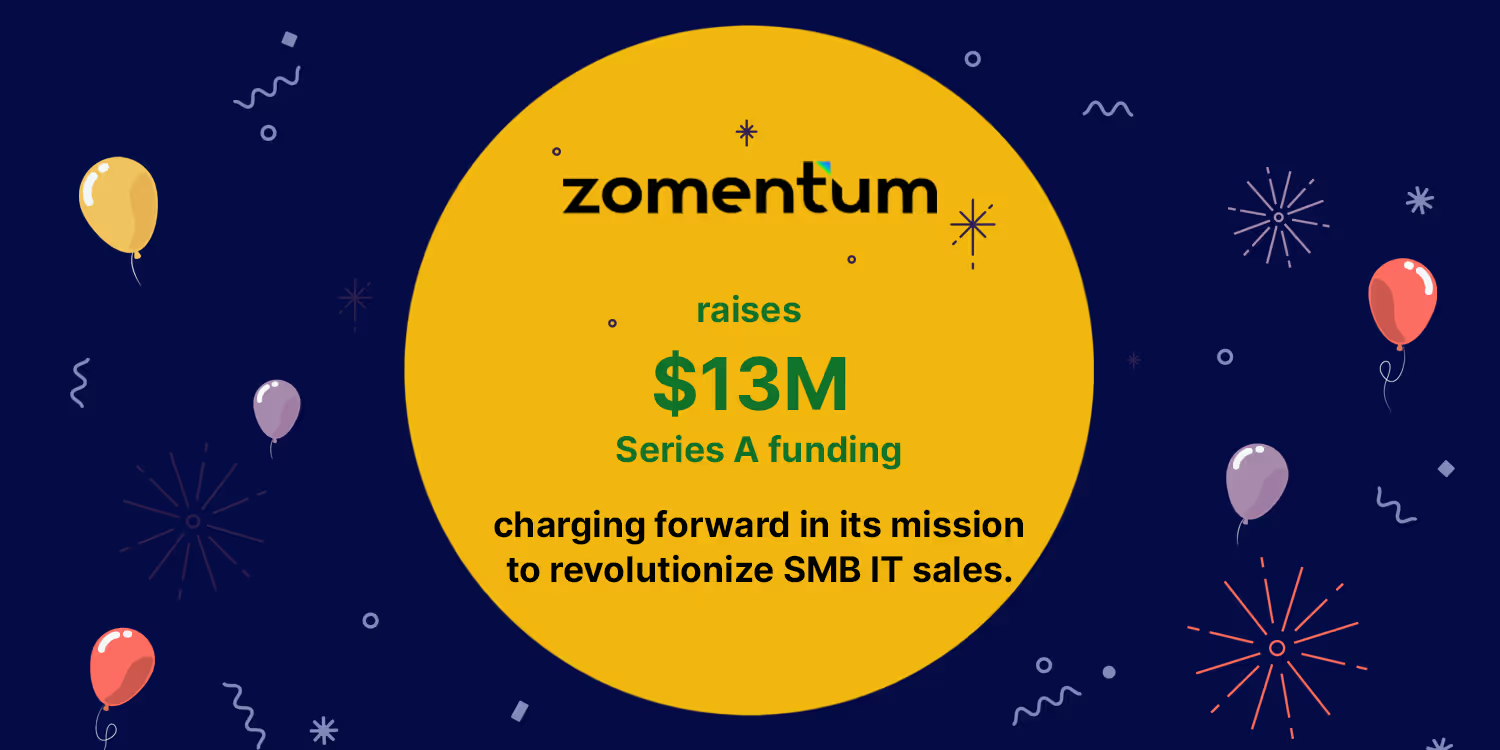How to Follow Up on MSP Sales Proposals to Reduce Drop-Offs

Sending a sales proposal is just the beginning of the journey toward closing a deal. Without effective follow-up, the chances of converting prospects into customers significantly decrease because, as it turns out, humans just forget things.
And if the prospects don’t convert, it’s not really a success. This is where sales follow up comes in. It plays a vital role in keeping your brand top-of-mind, addressing concerns, and nudging prospects toward a decision.
In this blog, we will explore the importance of sales follow up and how to plan it, from crafting compelling emails to leveraging personalization. We’ll also equip you with the sales follow up emails template to reduce funnel drop-offs and increase your chances of closing more deals.
Let's dive in and optimize your sales follow-up process for success.
What is a Sales Proposal Follow-Up?
A sales follow-up is a crucial step where you reach out to prospects after sending them killer MSP sales proposals. These follow-ups help you keep the conversation going and nudge your prospects closer to making a decision.
When it comes to sales follow-up, email is the go-to channel for most businesses because it's simple and convenient. Plus, it lets you maintain that personal touch while keeping a written record of your communication.
Now, these follow-up emails can be of two types: transactional or commercial.
The transactional ones provide essential information to complete a specific action, like confirming an order or giving pricing details. On the other hand, commercial follow-up emails are all about promoting your brand, raising awareness, and making that sale. By using sales follow-up as your weapon, you'll be nurturing leads, tackling objections, and guiding those prospects through the sales funnel like a pro.
Why is a Sales Proposal Follow-Up Important?
By taking the initiative to follow up, you increase the chances of converting prospects into satisfied customers and achieving sales success.
Here are some of the many reasons why sales proposal follow-up is important:
- Build trust and rapport: Following up on a sales proposal shows commitment and professionalism, strengthening trust with the prospect.
- Address concerns and objections: A follow-up allows you to address specific concerns, clarify misunderstandings, and provide additional information, increasing the chances of moving forward with the deal.
- Stay ahead of the competition: Prompt follow-ups maintain an active presence, reminding the prospect of your unique value proposition and keeping you ahead of competitors.
- Adapt to changing needs: Following up helps you stay updated on evolving needs, allowing you to tailor your offering and showcase your responsiveness.
- Upsell and cross-sell opportunities: Follow-ups can uncover additional pain points, creating opportunities to upsell or cross-sell relevant products and boost revenue.
How to Plan Your Sales Proposal Follow-Up?
Now that we understand why following up is important after sending MSP sales proposals, it's time to plan your follow-up strategy. With this super-useful eight-step process, you can ensure that your follow-up efforts are effective, professional, and persuasive.

1. Develop a Well-Structured Follow-up Plan
If you don’t have a plan for where you’re going, you might end up somewhere you don’t want to be. You must have a well-thought-out sales proposal follow-up plan.
Determine who you need to contact, what information you should include in your follow-up, and the specific goals you want to achieve.
Remember that follow-ups aren't just about closing the deal; they're also an opportunity to reinforce your company's strengths and address any concerns the client may have.
Establish a schedule and frequency for your follow-up emails to maintain consistent communication.
2. Categorize Leads: Warm Vs. Cold
To personalize your follow-ups, categorize your leads into warm and cold categories. Warm leads are those who have shown interest by opening and forwarding your business proposal email. Cold leads, on the other hand, haven't engaged with your proposal yet.
You can tailor your follow-up approach by differentiating between warm and cold leads. Personalize your messages for warm leads and use a more general approach for cold leads. If a cold lead doesn't respond after several attempts, it's best to focus your efforts elsewhere.
3. Provide Fresh and Valuable Information in Each Follow-Up
To keep your follow-up messages fresh and engaging, include something new or valuable in each communication. This could be a new case study that showcases successful outcomes, additional information about your proposal that addresses specific client needs or concerns, or even a limited-time discount or offer.
Providing new content or incentives with each follow-up increases the chances of capturing the client's attention and rekindling their interest.
4. Emphasize Personalization in Your Messages
Personalization is key to effective follow-up communication. Take the time to tailor your messages to each individual client. You can use their name, reference past conversations or meetings, and incorporate details relevant to their business or industry.
This level of personalization demonstrates your attentiveness and genuine interest in their specific needs. It also significantly increases the likelihood of your message being read and responded to, as clients appreciate the extra effort.
5. Try a Multi-Channel Approach
While email is a common and effective channel for sales follow-up, it's important to remember that clients may have different communication preferences. Consider adopting a multi-channel approach to increase your chances of reaching and engaging them.
In addition to email, explore other avenues such as phone calls, LinkedIn messages, or even sending personalized postcards. By diversifying your channels, you maximize the chances of your message being seen and responded to promptly.
6. Craft Clear and Compelling Call-to-Action (CTA)
The effectiveness of your follow-up messages relies heavily on a strong and precise CTA. Rather than using generic CTAs like "let's meet" or "call me," provide specific instructions that indicate exactly what you want the client to do.
For instance, you could suggest scheduling a meeting on Zoom or initiating a call on Skype to discuss their project. By proposing a specific time or date for the meeting, you demonstrate organization, professionalism, and respect for the client's time.
Moreover, this also removes any ambiguity and reduces the cognitive load on the client's end.
7. Find the Right Balance: Persistence Vs. Aggressiveness
It's crucial to strike the right balance between persistence and Aggressiveness in your sales follow-up approach. While staying proactive is essential, you must also respect each client's preferences and boundaries.
Tailor your follow-up frequency and tone based on individual needs. Some clients may appreciate a more assertive approach, while others may prefer a more laid-back style.
If you're unsure about a client's preference, start with a more relaxed approach and gradually increase the intensity if you don't receive a response.
8. Conclude With Positivity and Optimism
It's crucial to end your follow-up messages with a positive and upbeat tone. Show appreciation for the client's time and consideration, expressing genuine gratitude. Convey your excitement and eagerness to collaborate with them, highlighting your enthusiasm for the potential partnership.
A positive conclusion leaves a lasting impression and reinforces your professionalism. Instead of a generic "call me," infuse your call-to-action with positivity by saying, "looking forward to hearing from you."
This simple adjustment adds a sense of anticipation, enthusiasm, and engagement to your follow-up, making it more memorable and encouraging a favorable response.
Best Email Templates to Follow Up on Sales Proposals
Now that we know what plan to follow for sending effective sales follow-up emails for your MSP sales proposals, it’s time we give you some templates to enhance your game.
Template 1: Follow-up after 7 days without a response
Subject: MSP Sales Proposal - We think you missed it!
Hi [insert name],
I hope this email finds you well. I wanted to follow up on the MSP sales proposal I sent you last week.
I understand that you're likely busy, so I just wanted to ensure that you received the proposal and had a chance to review it.
If you have any questions or require any further information, please let me know. I'm here to assist you and provide any clarifications you may need.
I look forward to hearing from you soon.
Best regards,
[Your Name]
Template 2: Offering a free demo, sample, or test
Subject: Try Our [Product or Service] with a Free Demo
Hi [insert name],
I hope this email finds you well. As per our previous discussion, I am offering you the opportunity to experience firsthand how our [product or service] can benefit your [specific needs].
We have prepared a free demo for you to try out. It will provide you with a hands-on experience of the features and functionalities that can address your [specific pain points].
Please let me know if you're interested, and I'll be happy to provide you with access to the demo.
Thank you for considering [Your Company]. I look forward to hearing your feedback.
Best regards,
[Your Name]
Template 3: Sharing new features based on the client's requirements
Subject: Exciting Update: New Features for [Client's Requirement]
Hi [insert name],
I hope you're doing well. I wanted to share some exciting news with you regarding [client's requirement]. Based on our conversation, we have developed new features that align perfectly with your needs.
These new features can greatly enhance [specific benefits] for your team and streamline your [specific operations]. I believe they could have a significant impact on your overall productivity and success.
If you're available, I would love to schedule a quick call to discuss these new features in more detail and understand how they can be tailored to your unique requirements.
Thank you for your time, and I look forward to connecting soon.
Best regards,
[Your Name]
On a Concluding Note
The timeliness of your sales proposal follow-up plays a vital role in closing deals successfully. The importance of timely follow-ups cannot be overstated, as delays can result in lost opportunities, while being too hasty may come across as pushy.
Striking the right balance is essential, and this is where automation tools like Zomentum can be invaluable. With its efficient follow-up features and personalized approach, Zomentum can help you streamline your sales process and maximize your chances of converting prospects into customers.
Take your sales follow-up game to new heights with Zomentum. Book a demo today!
Suggested Blogs

What’s new in Zomentum - December 2019
.avif)
Zomentum Announces the Top Influential Partners of 2023: Leading the Way in Growth and Innovation

